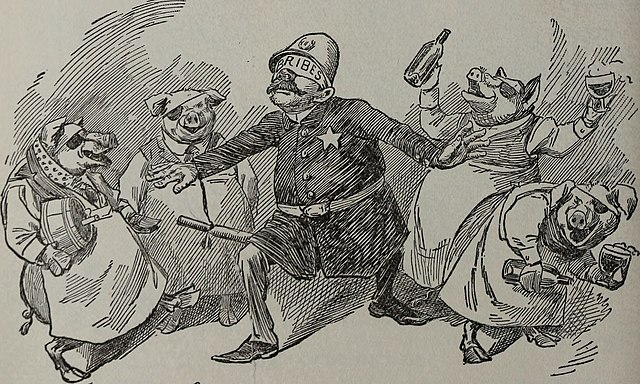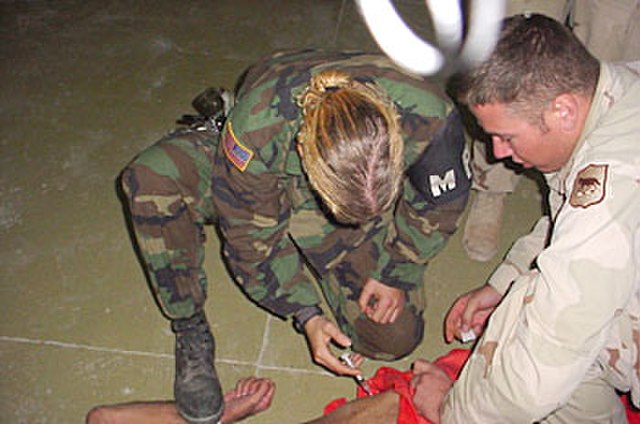Police corruption is a form of police misconduct in which law enforcement officers end up breaking their political contract and abusing their power for personal gain. This type of corruption may involve one or a group of officers. Internal police corruption is a challenge to public trust, cohesion of departmental policies, human rights and legal violations involving serious consequences. Police corruption can take many forms, such as: bribery, theft, sexual assault, and discrimination.
A 1902 cartoon depicts a police officer whose eyes are covered with a cloth labelled "bribes"
US Military Police officer restraining and sedating prisoner, while a soldier holds him down.
Police misconduct is inappropriate conduct and illegal actions taken by police officers in connection with their official duties. Types of misconduct include among others: sexual offences, coerced false confession, intimidation, false arrest, false imprisonment, falsification of evidence, spoliation of evidence, police perjury, witness tampering, police brutality, police corruption, racial profiling, unwarranted surveillance, unwarranted searches, and unwarranted seizure of property.
Mexico City's Police Chief, Arturo Durazo Moreno, was arrested in 1984.
Ticket booths used to search patrons at a music festival in Sydney in 2019
Police approach civil population in the brazilian Federal District.
Misconduct Payouts by the 10 U.S. Cities with the Largest Police Departments






